1950s

1951
Maser conceived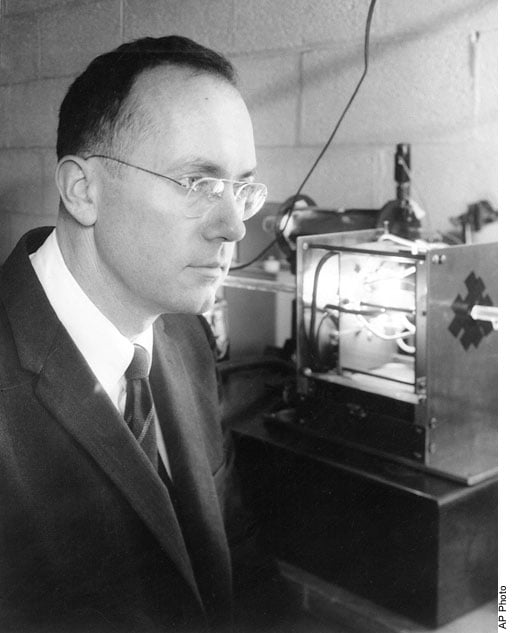
April 26, 1951: Charles Hard Townes of Columbia University conceives his maser (microwave amplification by stimulated emission of radiation) idea while sitting on a park bench in Washington.
1954
Maser demonstrated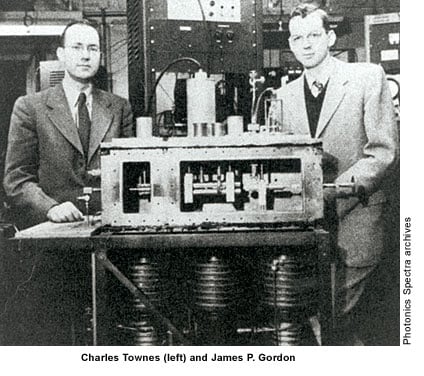
1954: Working with Herbert J. Zeiger and graduate student James P. Gordon, Townes demonstrates the first maser at Columbia University. The ammonia maser, the first device based on Einstein’s predictions, obtains the first amplification and generation of electromagnetic waves by stimulated emission. The maser radiates at a wavelength of a little more than 1 cm, and generates approximately 10 nW of power.
1955
Pumping method proposed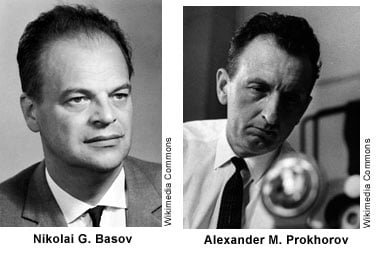
1955: At P.N. Lebedev Physical Institute in Moscow, Nikolai G. Basov and Alexander M. Prokhorov attempt to design and build oscillators. They propose a method for the production of a negative absorption that was called the pumping method.
1956
Microwave solid-state maser developed1956: Nicolaas Bloembergen of Harvard University develops the microwave solid-state maser.
1957
Optical maser conceivedSept. 14, 1957: Townes sketches an early optical maser in his lab notebook.
1957
Laser conceived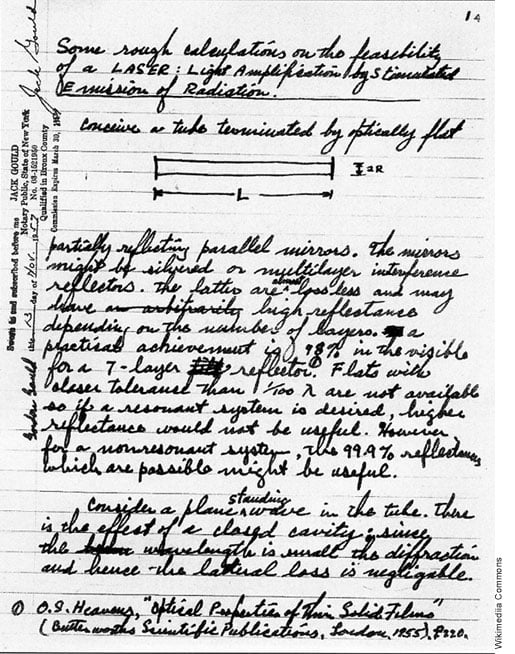
Nov. 13, 1957: Columbia University graduate student Gordon Gould jots his ideas for building a laser in his notebook and has it notarized by Jack Gould (no relation) at a candy store in the Bronx. It is considered the first use of the acronym LASER, light amplification by stimulated emission of radiation. Gould leaves the university a few months later to join private research company TRG (Technical Research Group).
1958
Optical maser theory discussed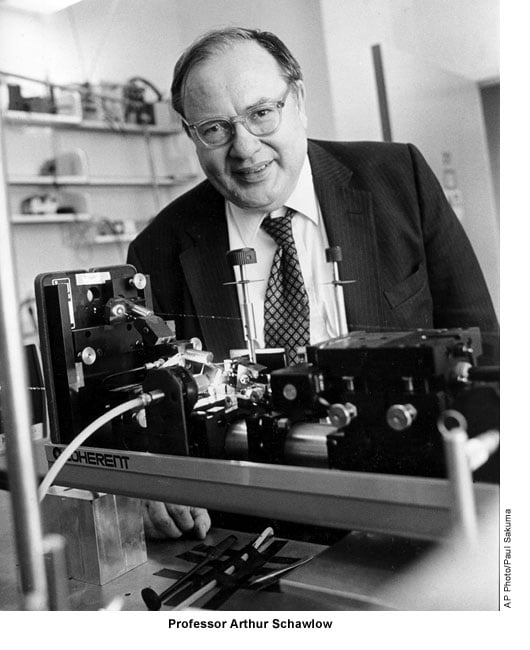
1958: In a joint paper published in
Physical Review Letters, Townes, a consultant for Bell Labs, and his brother-in-law, Bell Labs researcher Arthur L. Schawlow, theoretically show that masers could be made to operate in the optical and infrared region and propose how this could be accomplished. At Lebedev Institute in Moscow, Nikolai Basov and Alexander Prokhorov are also exploring the possibilities of applying maser principles in the optical region.
1959
Laser patent applicationApril 1959: Gould and TRG apply for laser-related patents stemming from Gould’s ideas.
1960s

1960
Laser patent granted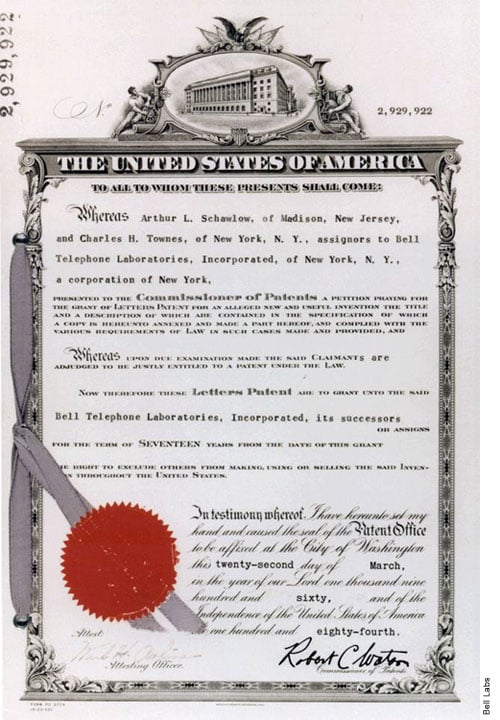
March 22, 1960: Townes and Schawlow, under Bell Labs, are granted US patent 2,929,922 for the optical maser, now called a laser. With their application denied, Gould and TRG launch what would become a 30-year patent dispute related to laser invention.
1960
First laser constructed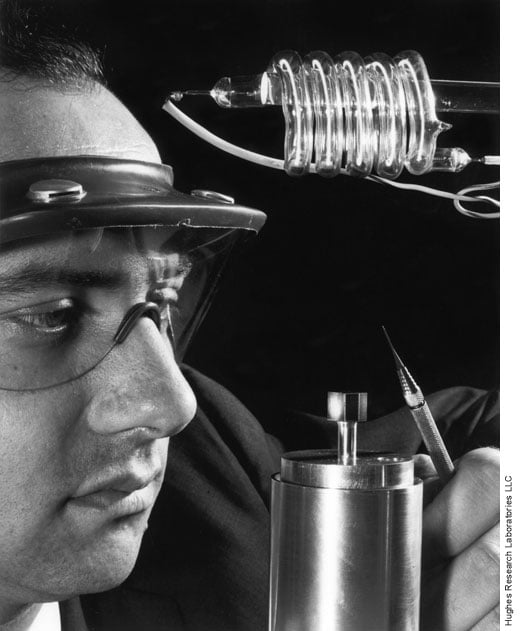
May 16, 1960: Theodore H. Maiman, a physicist at Hughes Research Laboratories in Malibu, Calif., constructs the first laser using a cylinder of synthetic ruby 1 cm in diameter and 2 cm long, with the ends silver-coated to make them reflective and able to serve as a Fabry-Perot resonator. Maiman uses photographic flashlamps as the laser’s pump source.
1960
Laser announcedJuly 7, 1960: Hughes holds a press conference to announce Maiman’s achievement.
1960
Second laser demonstratedNovember 1960: Peter P. Sorokin and Mirek Stevenson of the IBM Thomas J. Watson Research Center demonstrate the uranium laser, a four-stage solid-state device.
1960
First continuous-beam (HeNe) laser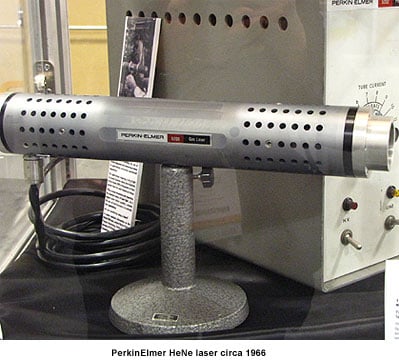
December 1960: Ali Javan, William Bennett Jr., and Donald Herriott of Bell Labs develop the helium-neon (HeNe) laser, the first to generate a continuous beam of light at 1.15 µm.
1961
Commercial market appearance1961: Lasers begin appearing on the commercial market through companies such as Trion Instruments, Perkin-Elmer and Spectra-Physics.
1961
Ruby laser improvedMarch 1961: At the second International Quantum Electronics meeting, Robert W. Hellwarth of Hughes Research Labs presents theoretical work suggesting that a dramatic improvement in the ruby laser could be made by making its pulse more predictable and controllable. He predicts a single spike of great power could be created if the reflectivity of the laser’s end mirrors were suddenly switched from a value too low to permit lasing to one that could.
1961
First Neodymium glass (Nd: glass) laserOctober 1961: American Optical Co.’s Elias Snitzer reports the first operation of a neodymium glass (Nd: glass) laser.
1961
First medical useDecember 1961: The first medical treatment using a laser on a human patient is performed by Dr. Charles J. Campbell of the Institute of Ophthalmology at Columbia- Presbyterian Medical Center and Charles J. Koester of the American Optical Co. at Columbia-Presbyterian Hospital in Manhattan. An American Optical ruby laser is used to destroy a retinal tumor.
1962
Q-switching invented1962: With Fred J. McClung, Hellwarth proves his laser theory, generating peak powers 100 times that of ordinary ruby lasers by using electrically switched Kerr cell shutters. The giant pulse formation technique is dubbed Q-switching. Important first applications include the welding of springs for watches.
1962
Gallium-arsenide laser developed1962: Groups at GE, IBM, and MIT's Lincoln Laboratory simultaneously develop a gallium-arsenide laser, a semiconductor laser that converts electrical energy directly into infrared light but which must be cryogenically cooled, even for pulsed operation.
1962
First yttrium aluminum garnet (YAG) laserJune 1962: Bell Labs reports the first yttrium aluminum garnet (YAG) laser.
1962
First red-light semiconductor lasers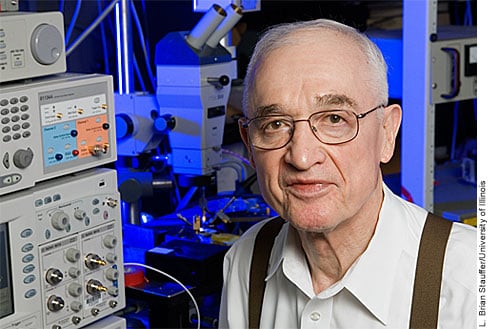
October 1962: Nick Holonyak Jr., a consulting scientist at a General Electric Co. laboratory in Syracuse, N.Y., publishes his work on the "visible red" GaAsP (gallium arsenide phosphide) laser diode, a compact, efficient course of visible coherent light that is the basis for today's red LEDs used in consumer products such as CDs, DVD players and cell phones.
1963
Laser sales hit $1 millionEarly 1963: Barron’s magazine estimates annual sales for the commercial laser market at $1 million.
1963
Mode-locked laser demo'd1963: Logan E. Hargrove, Richard L. Fork, and M. A. Pollack report the first demonstration of a mode-locked laser, i.e. a helium-neon laser with an acousto-optic modulator. Mode locking is fundamental for laser communication and is the basis for femtosecond lasers.
1963
Semiconductor lasers from heterostructure devices proposed1963: Herbert Kroemer of the University of California, Santa Barbara, and the team of Rudolf Kazarinov and Zhores Alferov of the A.F. Ioffe Physico-Technical Institute in St. Petersburg, Russia, independently propose ideas to build semiconductor lasers from heterostructure devices. The work leads to Kroemer and Alferov winning the 2000 Nobel Prize in physics.
1964
Nd:YAG (neodymium-doped YAG) laser invented1964: Nd:YAG (neodymium-doped YAG) laser invented by Joseph E. Geusic and Richard G. Smith at Bell Labs.
1964
First laser-related Nobel Prize awarded1964: Townes, Basov and Prokhorov are awarded the Nobel Prize in physics for their “fundamental work in the field of quantum electronics, which has led to the construction of oscillators and amplifiers based on the maser-laser-principle.”
1964
CO2 laser invented1964: The carbon-dioxide (CO2) laser is invented by Kumar Patel at Bell Labs. The most powerful continuously operating laser of its time, it is now used worldwide as a cutting tool in surgery and industry.
1964
Pulsed argon-ion laser discoveredMarch 1964: After working for two years on HeNe and xenon lasers, William B. Bridges of Hughes Research Labs discovers the pulsed argon-ion laser, which, although bulky and inefficient, could produce output at several visible and UV wavelengths.
1965
Two lasers are phase-locked1965: At Bell Labs, two lasers are phase-locked for the first time, an important step toward optical communications.
1965
First chemical laser1965: Jerome V.V. Kasper and George C. Pimentel demonstrate the first chemical laser, a 3.7-µm hydrogen chloride instrument, at the University of California, Berkeley.
1966
Dye laser discovered1966: The dye laser is discovered by Peter P. Sorokin and John R. Lankard at IBM's Thomas J. Watson Research Center in Yorktown Heights, NY.
1966
Breakthrough in fiber optics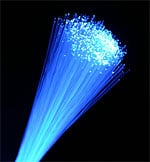
1966: Charles K. Kao, working with George Hockham at Standard Telecommunication Laboratories in Harlow, England, makes a discovery that leads to a breakthrough in fiber optics. He calculates how to transmit light over long distances via optical glass fibers, deciding that, with a fiber of purest glass, it would be possible to transmit light signals over a distance of 100 km, compared with only 20 m for the fibers available in the 1960s. Kao receives a 2009 Nobel Prize in physics for his work.
1966
Optical pumping work garners Nobel1966: French physicist Alfred Kastler wins the Nobel Prize in physics for his method of stimulating atoms to higher energy states, which he developed between 1949-51. The technique, known as optical pumping, was an important step toward the creation of the maser and the laser.
1967
Tunable dye laser inventedMarch 1967: Bernard Soffer and Bill McFarland invent the tunable dye laser at Korad Corp. in Santa Monica, Calif.
1968
Laser Industry Association founded (now LIA)February 1968: In California, Maiman and other laser pioneers found the laser advocacy group Laser Industry Association, the first industry association, which becomes the Laser Institute of America in 1972.
History of the LIA1970s

1970
Patent rights bought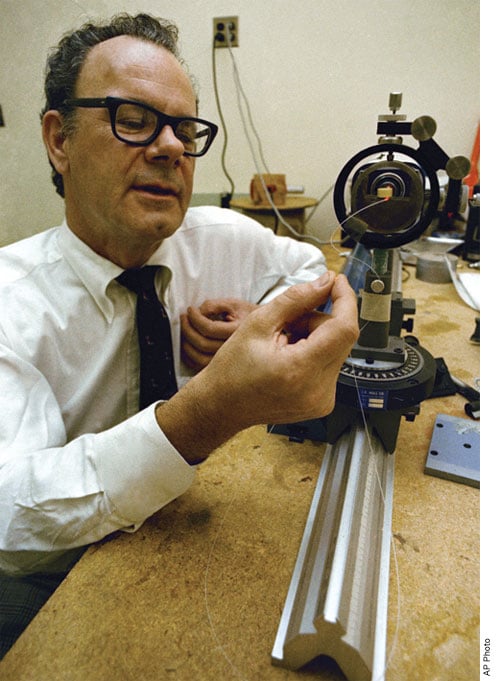
1970: Gordon Gould buys back his patent rights for $1 plus 10 percent of future profits when TRG is sold.
1970
Excimer laser developed1970: Nikolai Basov, V. A. Danilychev, and Yu. M. Popov develop the excimer laser at P.N. Lebedev Physical Institute in Moscow.
1970
Optical trapping invented1970: Arthur Ashkin of Bell Labs invents optical trapping, the process by which atoms are trapped by laser light. His work pioneers the field of optical tweezing and trapping and leads to significant advances in physics and biology.
1970
First continuous-wave room-temp. semiconductor lasersSpring 1970: Zhores Alferov’s group at the Ioffe Physico-Technical Institute in Russia and Mort Panish and Izuo Hayashi at Bell Labs produce the first continuous-wave room-temperature semiconductor lasers, paving the way toward commercialization of fiber optics communications.
1972
Quantum well laser invented1972: Charles H. Henry invents the quantum well laser, which requires much less current to reach lasing threshold than conventional diode lasers, and which is exceedingly more efficient. Nick Holonyak Jr. and students at the University of Illinois at Urbana-Champaign first demonstrate the quantum well laser in 1977.
1972
Laser forms electronic circuit patterns 1972: A laser beam is used at Bell Labs to form electronic circuit patterns on ceramic.
1973
First version of ANSI Z136.1 is releasedFirst version of ANSI Z136.1, Safe Use of Lasers, is released "
1974
Barcode scanners used in storesJune 26, 1974: A pack of Wrigley’s chewing gum is the first product read by a bar-code scanner in a grocery store.
1975
Continuous-wave semiconductor laser commercialized1975: Engineers at Laser Diode Labs Inc. develop the first commercial continuous-wave semiconductor laser operating at room temperature. Continuous-wave operation enables the transmission of telephone conversations.
1975
First quantum-well laser operation1975: First quantum-well laser operation made by Jan P. Van der Ziel, R. Dingle, Robert C. Miller, William Wiegmann, and W.A. Nordland Jr. The lasers are actually developed in 1994.
1976
Semiconductor laser demonstrated beyond 1 µm1976: First demonstration, at Bell Labs, of a semiconductor laser operating continuously at room temperature at a wavelength beyond 1 µm, the forerunner of sources for long-wavelength lightwave systems.
1976
First free-electron laser (FEL)1976: John Madey and his group at Stanford University demonstrate the first free-electron laser (FEL). Instead of a gain medium, FELs use a beam of electrons that are accelerated to near light speed, then passed through a periodic transverse magnetic field to produce coherent radiation. Because the lasing medium consists only of electrons in a vacuum, FELs don’t have the material damage or thermal lensing problems that plague ordinary lasers and can achieve very high peak powers.
1977
Fiber optics installed under Chicago1977: The first commercial installation of Bell Labs fiber optic lightwave communications system is completed under the streets of Chicago.
1977
Gould awarded optical pumping patentOct. 11, 1977: Gordon Gould is issued a patent for optical pumping, then used in about 80 percent of lasers.
1978
LaserDisc hits the home video market1978: The LaserDisc hits the home video market, with little impact. The earliest players use HeNe laser tubes to read the media, while later players used infrared laser diodes.
1978
Compact disc (CD) project announced1978: Following the failure of its videodisc technology, Philips announces the compact disc (CD) project.
1979
Gould receives patent covering laser applications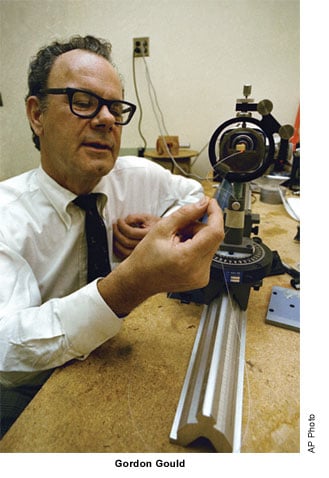
1979: Gordon Gould receives a patent covering a broad range of laser applications.
1980s

1981
Schawlow, Bloembergen win Nobel1981: Arthur Schawlow and Nicholaas Bloembergen receive the Nobel Prize in physics for their contributions to the development of laser spectroscopy.
1982
Titanium-sapphire laser developed1982: Peter F. Moulton of MIT’s Lincoln Laboratory develops the titanium-sapphire laser, used to generate short pulses in the picosecond and femtosecond ranges. The Ti:sapphire laser replaces the dye laser for tunable and ultrafast laser applications.
1982
The audio CD debuts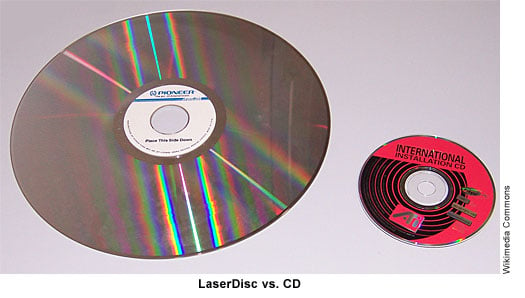
October 1982: The audio CD, a spinoff of LaserDisc video technology, debuts. While ABBA's new album, “The Visitors,” is the first to be manufactured on CD, the first CD to be released commercially is Billy Joel's 1978 album "52nd Street."
1985
Lasers used to manipulate atoms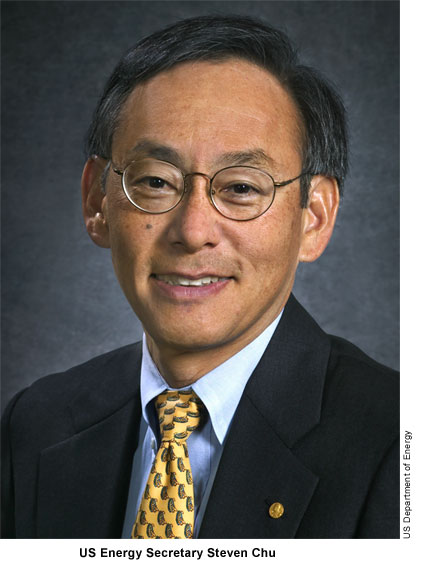
1985: Bell Labs’ Steven Chu (now US Secretary of Energy) and his colleagues use laser light to slow and manipulate atoms. Their laser cooling technique, also called “optical molasses,” is used to investigate the behavior of atoms, providing an insight into quantum mechanics. Chu, Claude N. Cohen-Tannoudji, and William D. Phillips win a Nobel Prize for this work in 1997.
1987
Erbium-doped fiber amplifiers introduced1987: David Payne at the University of Southampton in England and his team introduce erbium-doped fiber amplifiers. These new optical amplifiers boost light signals without first having to convert them into electrical signals and then back into light, reducing the cost of long distance fiber optic systems.
1988
Gould begins receiving royalties1988: Nearly 30 years after his laser-building brainstorm, Gordon Gould begins receiving royalties from his patents.
1990s

1994
Quantum cascade laser invented1994: The first semiconductor laser that can simultaneously emit light at multiple widely separated wavelengths — the quantum cascade (QC) laser — is invented at Bell Labs by Jerome Faist, Federico Capasso, Deborah L. Sivco, Carlo Sirtori, Albert L. Hutchinson and Alfred Y. Cho. The laser is unique in that its entire structure is manufactured a layer of atoms at a time by the crystal growth technique called molecular beam epitaxy. Simply changing the thickness of the semiconductor layers can change the laser’s wavelength. With its room-temperature operation and power and tuning ranges, the QC laser ideal for remote sensing of gases in the atmosphere.
1994
Quantum dot laser demonstrated1994: The first demonstration of a quantum dot laser with high threshold density was reported by Nikolai N. Ledentsov of A.F. Ioffe Physico-Technical Institute in Leningrad.
1994
Single atom laser demonstrated1994: The single atom laser, a fundamental system in which a two-level atom is coupled to a single mode of the optical field, is demonstrated by Michael S. Feld, Ramachandra R. Dasari, James J. Childs and Kyungwon An at MIT's George R. Harrison Spectroscopy Laboratory in Cambridge, Mass.
1996
First pulsed atom laserNovember 1996: The first pulsed atom laser, which uses matter instead of light, is demonstrated at MIT by Wolfgang Ketterle.
1997
Gallium-nitride (GaN) laser developedJanuary 1997: Shuji Nakamura, Steven P. DenBaars and James S. Speck at the University of California, Santa Barbara, announce the development of a gallium-nitride (GaN) laser that emits bright blue-violet light in pulsed operation.
2000s

2003
First laser-powered aircraft flownSept. 2003: A team of researchers from NASA's Marshall Space Flight Center in Huntsville, Ala., from NASA’s Dryden Flight Research Center at Edwards, Calif., and from the University of Alabama in Huntsville successfully flies the first laser-powered aircraft. The plane, its frame made of balsa wood, has a 1.5-m wingspan and weighs only 311 g. Its power is delivered by an invisible, ground-based laser that tracks the aircraft in flight, directing its energy beam at specially designed photovoltaic cells carried onboard to power the plane's propeller.
2004
Electronic switching in a Raman laser demonstrated2004: Electronic switching in a Raman laser is demonstrated for the first time by Ozdal Boyraz and Bahram Jalali of UCLA. The first silicon Raman laser operates at room temperature with 2.5-W peak output power. In contrast to traditional Raman lasers, the pure-silicon Raman laser can be directly modulated to transmit data.
2006
First electrically powered hybrid silicon laserSeptember 2006: John Bowers and colleagues at the University of California, Santa Barbara, and Mario Paniccia, director of Intel’s Photonics Technology Lab in Santa Clara, Calif., announce that they have built the first electrically powered hybrid silicon laser using standard silicon manufacturing processes. The breakthough could lead to low-cost, terabit-level optical data pipes inside future computers, Paniccia says.
2007
First mode-locked silicon evanescent laserAugust 2007: UCSB's John Bowers and his doctoral student, Brian Koch, announce that they have built the first mode-locked silicon evanescent laser, providing a new way to integrate optical and electronic functions on a single chip and enabling new types of integrated circuits.
2009
Fast laser pulses improve light bulbs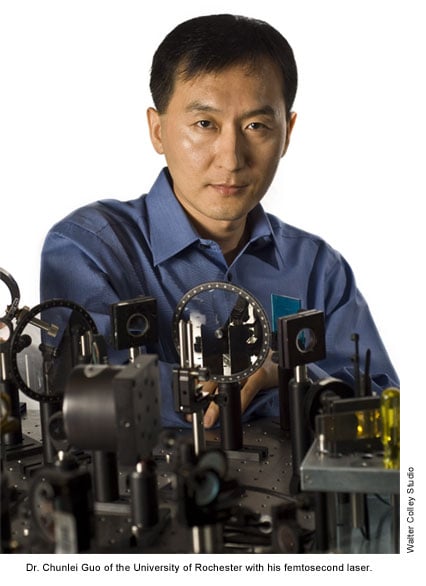
May 2009: The University of Rochester’s Chunlei Guo announces a new process that uses femtosecond laser pulses to make regular incandescent light bulbs superefficient. The laser pulse, trained on the bulb’s filament, forces the surface of the metal to form nanostructures that make the tungsten become far more effective at radiating light. The process could make a 100-W bulb consume less electricity than a 60-W bulb, Guo says.
2009
National Ignition Facility dedicatedMay 29, 2009: The largest and highest-energy laser in the world, the National Ignition Facility (NIF) at Lawrence Livermore National Laboratory in Livermore, Calif., is dedicated. In a few weeks, the system begins firing all 192 of its laser beams onto targets.
2009
NASA launches the LRO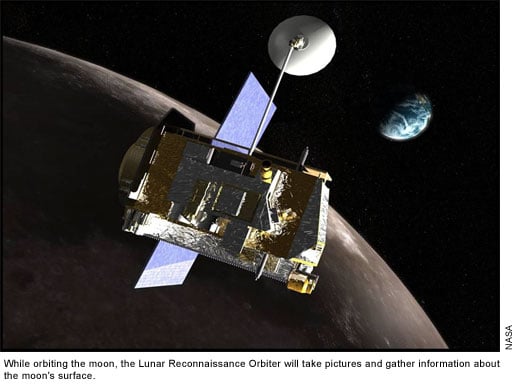
June 2009: NASA launches the Lunar Reconnaissance Orbiter (LRO). LOLA, the Lunar Orbiter Laser Altimeter on the LRO, will use a laser to gather data about the high and low points on the moon. NASA will use that information to create 3-D maps that could help determine lunar ice locations and safe landing sites for future spacecraft.
2009
Intel announces Light Peak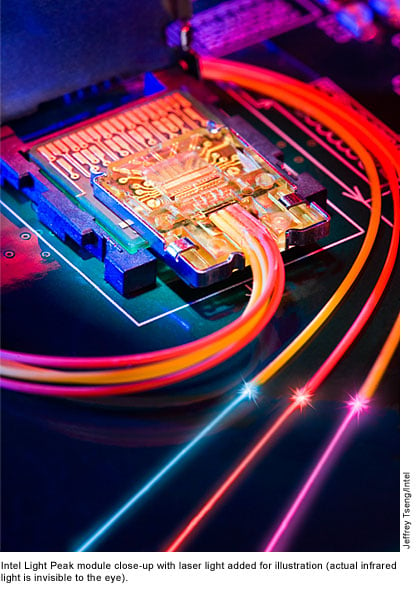
September 2009: Lasers get ready to enter household PCs with Intel’s announcement of its Light Peak optical fiber technology at the Intel Developer Forum. Light Peak contains VCSELs (vertical-cavity surface-emitting lasers) and can send and receive 10 billion bits of data per second, meaning it could transfer the entire Library of Congress in 17 minutes. The product is expected to ship to manufacturers in 2010.
2009
Multibeam IR-emitting lasers appear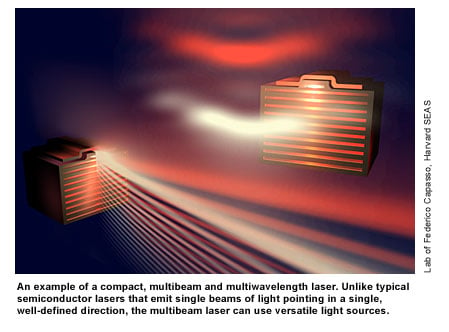
November 2009: An international team of applied scientists demonstrates compact, multibeam and multiwavelength lasers emitting in the infrared. Typically, lasers emit a single light beam of a well-defined wavelength; with their multibeam abilities, the new lasers have potential uses in chemical detection, climate monitoring and communications. The research is led by Nanfang Yu and Federico Capasso of the Harvard School of Engineering and Applied Sciences (SEAS); Hirofumi Kan of the Laser Group at Hamamatsu Photonics; and Jérôme Faist of ETH Zürich. In one of the team's prototypes, the new laser emits several highly directional beams with the same wavelength near 8 µm, a function useful for interferometry.
2009
Laser market to hit nearly $6 billion in 2010December 2009: Industry analysts predict the laser market globally for 2010 will grow about 11 percent, with total revenue hitting $5.9 billion.
2010s

2010
A decade of expansion and growthDuring this decade, lasers become both bigger and smaller in size, as well as more powerful and less expensive. The technology expands in number of wavelengths and in the range of materials used. Lasers have worked their way into everyday life and otherworldly applications. By the end of 2018, the laser market stands at more than $12.9 billion, according to a December 2018 study by MarketsandMarkets.
2010
Researchers hit 53% QCL efficiencyNorthwestern University researchers led by professor Manijeh Razeghi reported a breakthrough in quantum cascade laser efficiency, hitting 53% as compared to the previous best of less than 40%. This efficiency figure, Razeghi said, meant the device produced more light than heat. The lasers emitted at 4.85 µm, in the mid-IR region (3 to 5 µm), which is useful for remote sensing.
2010
NIF delivers 1 MJ of laser energy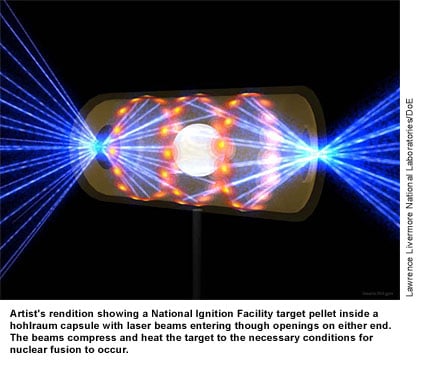
January 2010: The National Nuclear Security Administration announces that NIF has successfully delivered a historic level of laser energy — more than 1 MJ — to a target in a few billionths of a second and demonstrated the target drive conditions required to achieve fusion ignition, a project scheduled for the summer of 2010. The peak power of the laser light is about 500 times that used by the US at any given time.
2010
Short laser pulses generatedAs reported in the January issue of Nature Photonics, scientists at the University of Konstanz generated a 4.3-fs single-cycle pulse of light at 1.5-µm wavelength from an erbium-doped fiber laser. Such short laser pulses could benefit frequency metrology, ultrafast optical imaging, and other applications, they said.
2010
Single-atom laser demonstratedMarch 31, 2010: Rainer Blatt and Piet O. Schmidt and their team at the University of Innsbruck in Austria demonstrate a single-atom laser with and without threshold behavior by tuning the strength of atom/light field coupling.
2010
Ultrafast laser pulses used to probe material properties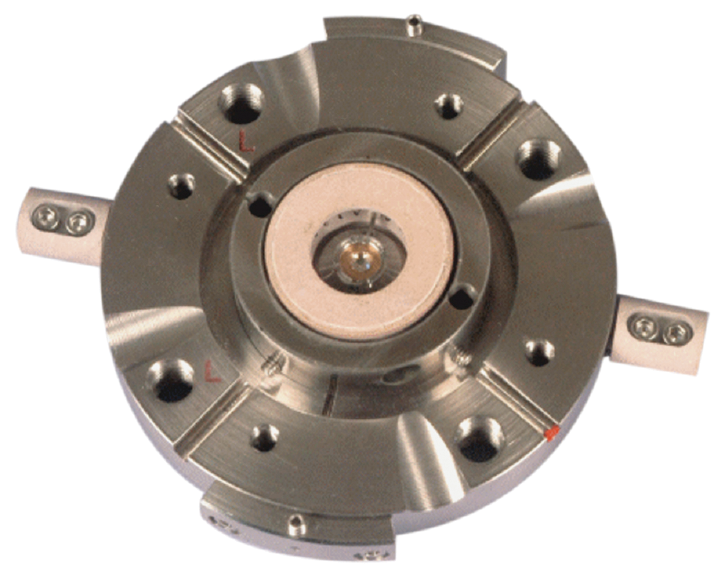
A paper in the July 15 issue of the Journal of Applied Physics reported that Lawrence Livermore National Laboratory physicists used ultrafast laser pulses to probe basic material properties. With the laser pulses, the researchers generated shock waves in a diamond anvil cell, which pushed the pressure in argon and other gases up to 280,000 atmospheres.
2011
Investigators at ETH Zürich produce VECSELUnder the direction of Hans Zogg, investigators at ETH Zürich (part of the Swiss Federal Institute of Technology) produced, for the first time, a vertical external cavity surface-emitting laser (VECSEL) that operated in the mid-IR at about 5 µm. This wavelength range is useful for spectroscopic applications. The potential of VECSELs motivated members of the research team to found a company called Phocone to commercialize the technology.
2011
Harvard University researchers demonstrate a living laserHarvard University researchers Malte Gather and Seok Hyun Yun demonstrated a living laser and reported on the advancement in the June issue of Nature Photonics. They genetically engineered cells to produce a novel material — green fluorescent protein (GFP), the substance that makes jellyfish bioluminescent. They then placed a 15- to 20-µm-diameter cell in an optical resonator and pumped the cell with blue light pulses. The cell lased without being harmed, thus opening the door to medical and biophotonic applications.
2011
Zinc oxide nanowire waveguide lasers producedScientists at the University of California, Riverside, led by professor Jianlin Liu, produced zinc oxide nanowire waveguide lasers. Their findings appeared in the July issue of Nature Nanotechnology. By devising a way to create p-type material, the team was able to form a p-n junction diode. When powered by a battery, this diode made the nanowires lase from their ends. Nanowire lasers could be smaller and lower cost, with higher power and shorter wavelength than other ultraviolet semiconductor diode lasers.
2012
A team from Yale University created a random laserA team from Yale University created a random laser. While as bright as a traditional laser, these sources are made from disordered materials and produce emission with low spatial coherence. Because this characteristic eliminates noise, or speckle, a random laser could benefit full-field microscopy and digital light projection, said researchers Brandon Redding, Michael Choma, and Hui Cao in an April Nature Photonics paper.
2012
NIF's 500-TW Laser Shot Sets RecordIn July, a new record was set: peak power in excess of 500 trillion watts. Delivered by 192 UV laser beams at Lawrence Livermore National Laboratory’s National Ignition Facility, the 1.85 MJ of energy struck a target that was just 2 mm in diameter. The energy level enabled the study of states of matter such as those found in the centers of planets and stars, and allowed the investigation of hydrogen fusion as a potential power source. The brief burst of energy also duplicated conditions inside a modern nuclear device, providing a way to verify simulations without actual testing. The energy level was 85% higher than that achieved at the facility in March 2009.
Read the story2012
NASA's Curiosity rover zaps rock on Mars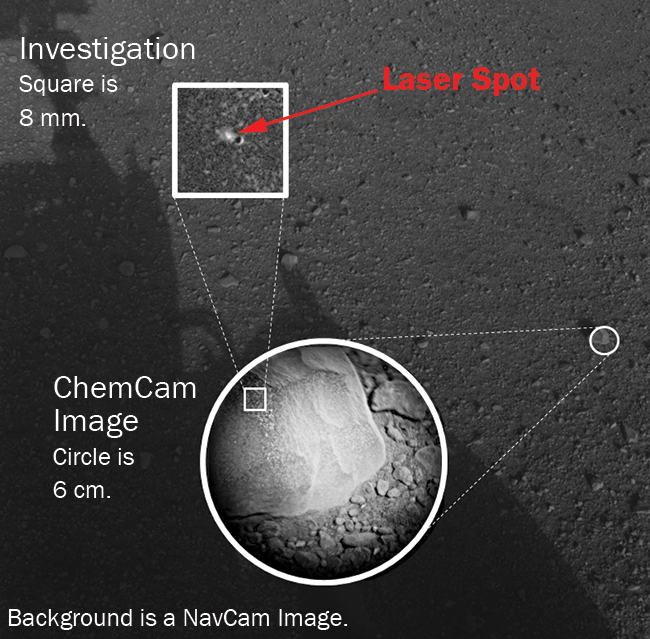
In August, a laser zapped a rock on Mars. It was NASA's Curiosity rover getting to work. In September, the rover started on what was to be a two-year mission. The Curiosity’s instrumentation used an Nd:KGW crystal to produce light at 1.067 µm. The light then traveled through a telescope and focused on a spot 1 to 7 meters distant. Repeated pulses of light generated a plume from the rock, allowing the use of laser-induced breakdown spectroscopy and a determination of the rock’s composition.
2013
Team develops control scheme for random lasersWhile random lasers offer advantages, they also have drawbacks. They have an irregular and chaotic spatial emission pattern, for instance. A team led by professor Stefan Rotter of the Vienna University of Technology came up with a control scheme. The layout of the granular material in a given laser determines the emission direction, the researchers noted, because the light bounces back and forth among the particles as it undergoes amplification. Pumping the material in a nonuniform way that matches this layout can therefore be used to set the emission direction, making the random laser more useful, the researchers reported in Physical Review Letters in July.
2013
Researchers fit as many as 10x more pulses into a fiberLaser pulses traveling down fiber optic cables carry the world's information — everything from financial transactions to cat videos. In a December paper in Nature Communications, researchers Camille Brès and Luc Thévenaz from Ecole Polytechnique Fédérale de Lausanne (EPFL) showed how to fit as many as 10x more pulses into a fiber. By modulating the lasers, the scientists produced pulses with frequencies of equal intensity, making the pulses rectangular and able to fit together with little or no wasted space.
2013
Room-temperature laser nanowires emit in the near-IRA team including Benedikt Mayer and others from the Technical University of Munich demonstrated room-temperature laser nanowires that emitted in the near-IR. Constructed in a core-shell configuration, the nanowires both produced light and acted as waveguides, the researchers reported in Nature Communications in December. The nanowires, they noted, could be grown directly on silicon chips, a plus, but also required optical pumping — a minus, as applications are likely to require electrically injected devices.
2014
Laser ablation reported to boost rocketsPhysicists Yuri Rezunkov and Alexander Schmidt reported in an October Applied Optics paper that rockets could get a boost from lasers. Laser ablation has long been proposed for rocket propulsion. In this method, a laser strikes a surface and creates a plasma plume that generates thrust as it exits. Integrating laser ablation with a gas steering system so the plume flows near the interior walls of a spacecraft’s nozzles increases the speed at which the plume exits, thereby increasing thrust and making the technique more practical.
2014
Lasers used to create gigabit transmission between satellites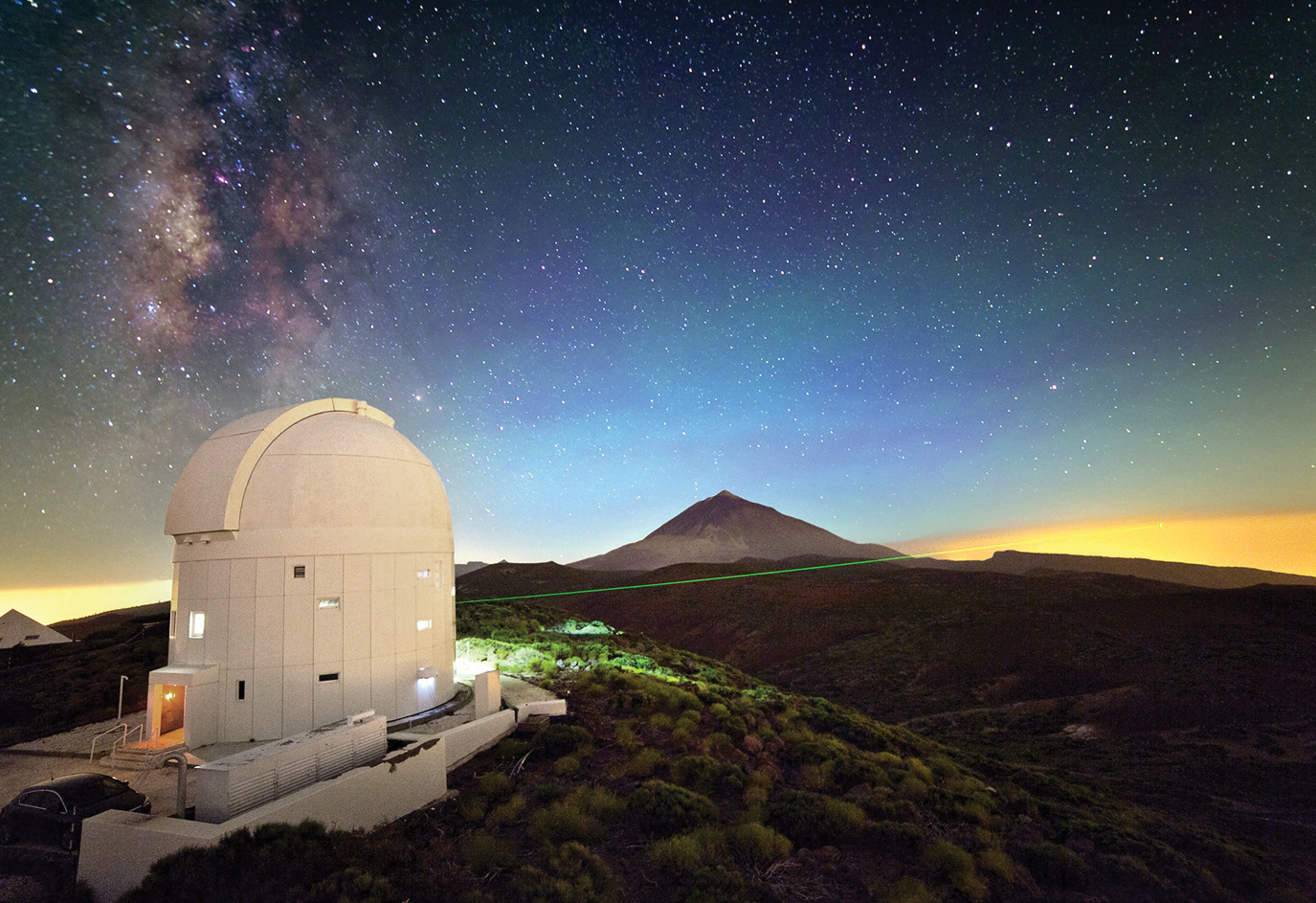
In November, it was one giant leap for data. The European Space Agency and partner organizations used lasers to create a gigabit transmission between a satellite in low Earth orbit and one in geosynchronous orbit — a distance of about 45,000 km. They said the design could scale to 7.2 Gb/s in the future. Because the link was faster than what was available before, data could flow between satellites and ultimately to the ground at a quicker clip. The system in place previously could only transmit to designated ground stations when the satellite was in range. Linking to geosynchronous satellites eliminated these gaps.
2014
Compact particle accelerator set new world record of 4.25 GeV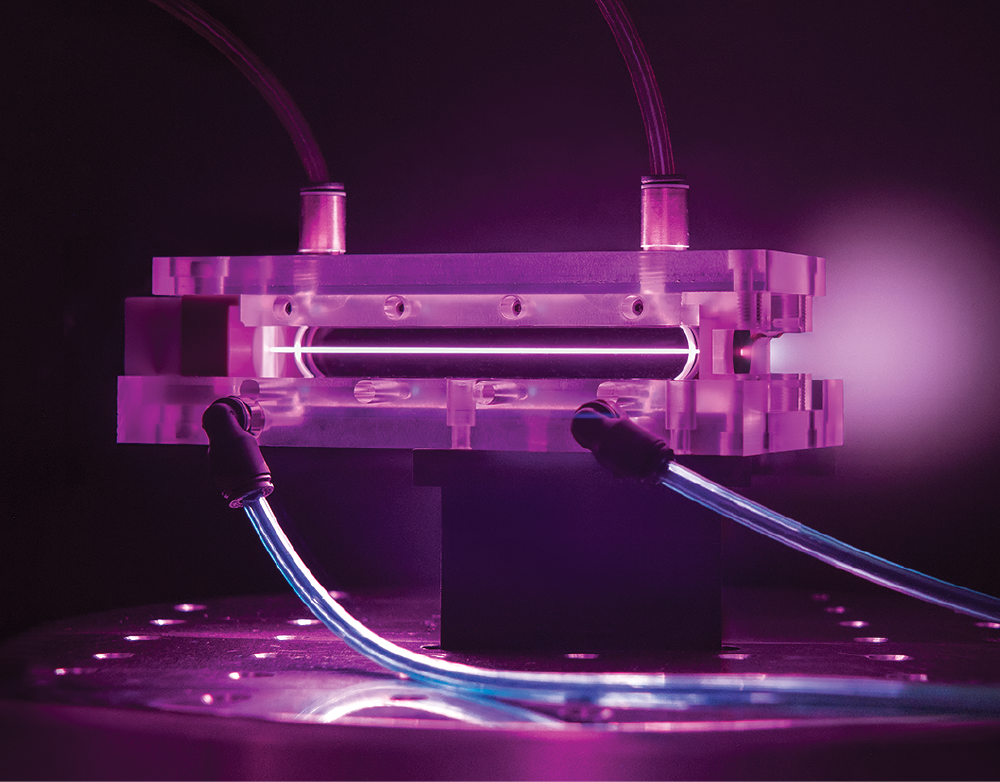
A team from Lawrence Berkeley National Lab reported in the December issue of Physical Review Letters on a new world record for a compact or "tabletop" particle accelerator: 4.25 GeV. This was accomplished in a 9-cm-long tube, meaning the energy gradient that accelerated the electrons was 1000× greater than traditional particle accelerators. The scientists fired subpetawatt laser pulses into the plasma. Approaching a quadrillion (1015 or a million billion) watts, the pulses of light energy pushed the electrons along like a surfer riding a wave, so they came well within 0.01% of the speed of light.
2015
Dr. Charles Hard Townes diesJanuary 27, 2015: Dr. Charles Hard Townes, whose work on stimulated emission led to the creation of lasers and enabled the photonics industry, died Jan. 27 at age 99.
In Memoriam: Charles Hard Townes2015
Random Raman laser pulse capable of nanosecond strobe timeIn May, a team led by Texas A&M University physicist Brett Hokr added another bit of randomness to the light fantastic toolbox. In a presentation at CLEO 2015, the researchers reported on a random Raman laser capable of producing a wide-field, speckle-free image with a strobe time of about a nanosecond. The random Raman laser pulse, tests showed, lasted a few nanoseconds and had a spectral width of about 0.1 nm. Using these pulses, the researchers produced a full-frame, speckle-free microscopic image showing the formation of a cavitation bubble from melanosomes, organelles found in animal cells that are the site for synthesis, storage, and transport of the light-absorbing pigment melanin.
2015
Research published involving cells swallowing microresonators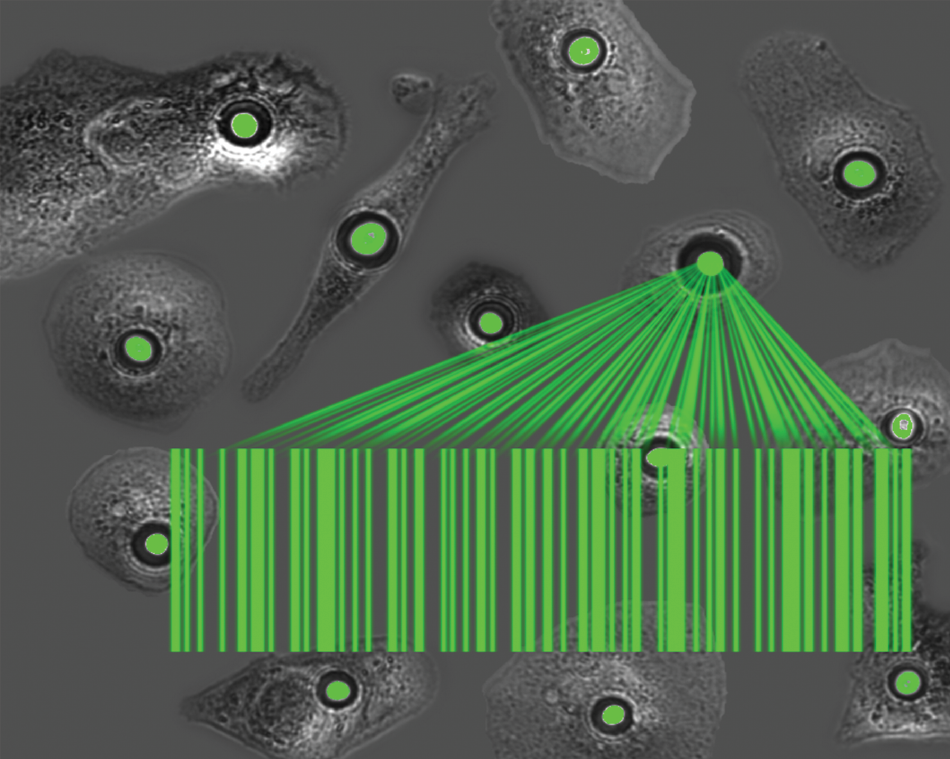
Two groups simultaneously published work in Nano Letters (University of St Andrews) and Nature Photonics (Harvard Medical School) about research involving cells swallowing microresonators. These microscopic plastic beads trap light by forcing it into a circular path along their circumference. When optically pumped by nanojoule light sources, the resonators lase without damaging the cell. The spectral composition of the microlaser is different for each cell. This, the researchers noted, could enable new forms of cell tracking, intracellular sensing, and adaptive imaging for thousands, millions, and potentially billions of cells.
2015
Lasers reported to print data at a microscopic levelResearchers Anders Kristensen and others from the Technical University of Denmark reported in a December Nature Nanotechnology paper that laser printing too small to be seen by the unaided eye could be used to encode data. They used laser beams to deform 100-nm-diameter columns, causing the columns to produce colors when illuminated. The scientists exploited this to create a 50-µm-wide reproduction of the "Mona Lisa," about 10,000x smaller than the original.
Potential uses included creating small serial numbers or barcodes and other information, said the researchers.
2016
ASML announces that EUV lithography appears to be ready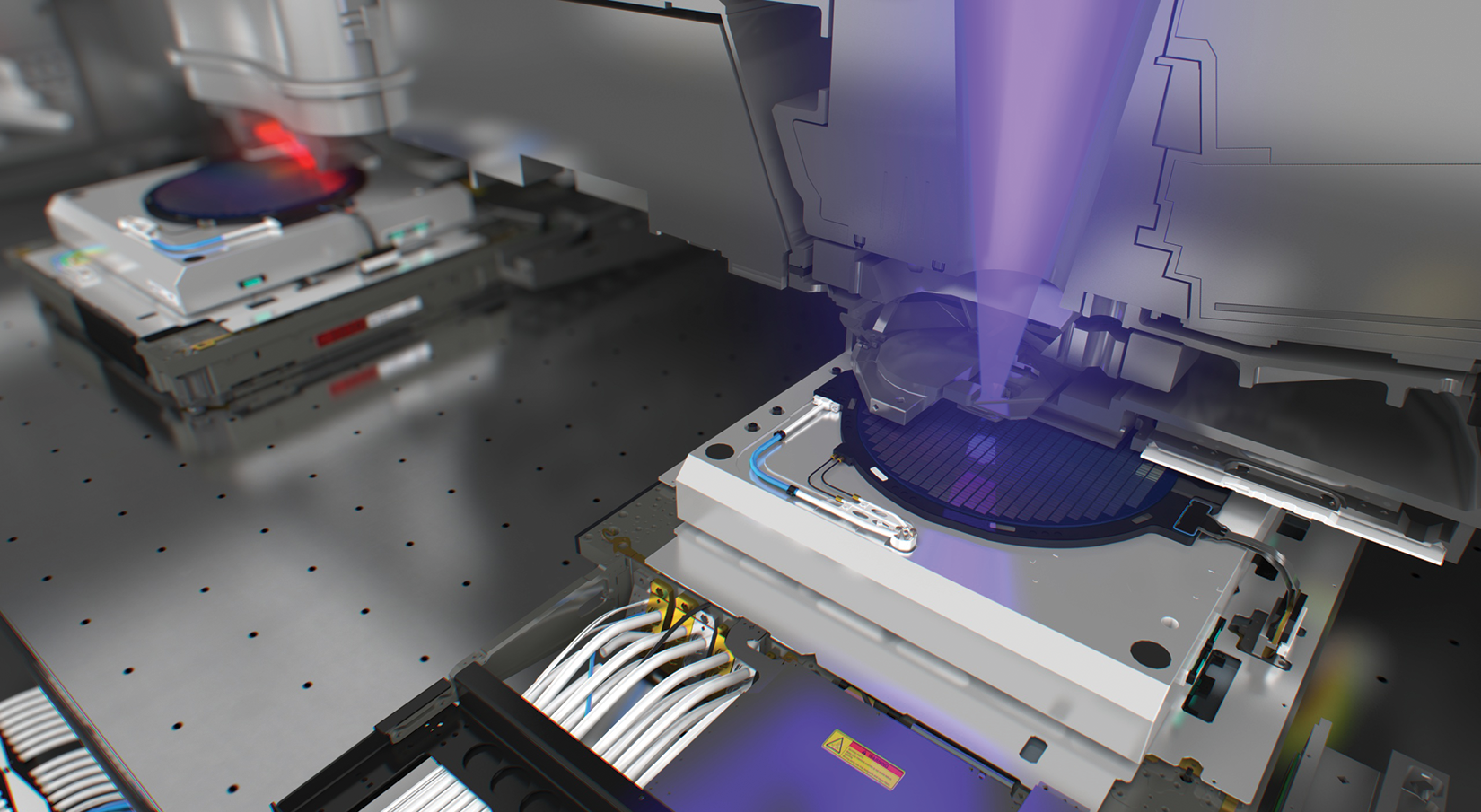
At the SPIE Advanced Lithography Symposium in San Jose, Calif., in February, semiconductor lithography toolmaker ASML announced that EUV (extreme ultraviolet) lithography technology finally appeared to be ready. After years of development in which progress lagged because the light source was not bright enough, ASML threw its weight behind the laser-produced plasma approach. With this method, an infrared CO2 laser fires a concentrated pulse at a microscopic droplet of molten tin. After filtering the resulting emission burst, the result was a 13.5-nm, or EUV, pulse of light. This technology and its resultant wavelength, much shorter than the 193-nm-deep UV lasers used in semiconductor production, are key to continuing advancements in semiconductor manufacturing.
2016
Quantum dot lasers grown on siliconResearchers from Cardiff University, University College London, and the University of Sheffield reported in the March issue of Nature Photonics that they grew quantum dot lasers on silicon. The lasers were electrically pumped, emitted at 1300 nm, and were shown to operate at temperatures of up to 120 °C for up to 100,000 hours. The goal, according to the team, was ultimately to integrate photonics with silicon electronics.
2016
Optical wavefront correction used to get rid of atmospheric oscillations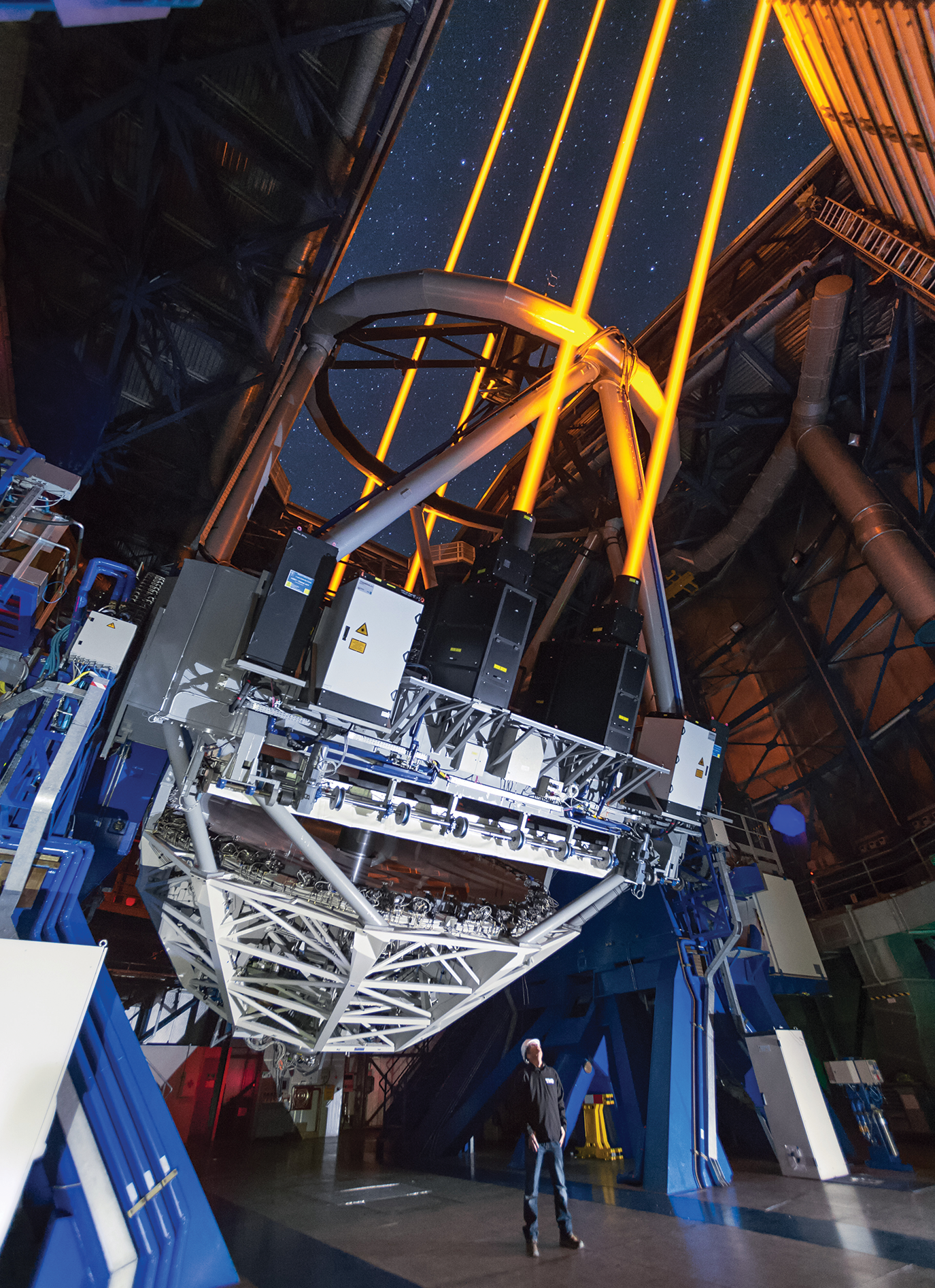
In September, the Laser Guide Star Alliance won third place for the 2016 Berthold Leibinger Innovation Prize. Modern telescopes use optical wavefront correction to get rid of the atmospheric oscillations that make stars twinkle. The result leads to the ability to see as well as anything achievable in space. The achievement requires guide stars, however, that are sufficiently bright so the correction can be made. If no guide stars are visible, then astronomers create artificial ones by exciting a sodium layer at an altitude of about 90 km. For the Very Large Telescope based in the Atacama Desert in Chile, the Laser Guide Star Alliance used Raman amplification to generate the required wavelength at significantly higher than 20 W, a record power level. The team used diode and fiber lasers in an eight-year development effort.
2017
NASA's JPL notes that lasers could improve space communicationIn a February release, NASA's Jet Propulsion Laboratory in Pasadena, Calif., noted that lasers could give space communications a "broadband" moment. Since the dawn of the Space Age, radio has been the standard way to communicate. It translates, at best, to connections that run a few megabits per second. A spacecraft orbiting Mars, for example, maxes out at a 6-Mb/s radio transmission rate. A laser could increase the rate to an estimated 250 Mb/s. However, lasers are subject to interference from clouds, they require more precise pointing, and they need a ground-based infrastructure in place to support them. Missions set to launch in 2019 and 2023 will test the technology, helping to determine whether lasers have a future in space communications.
2017
Lockheed Martin system produces a single beam of 58 kW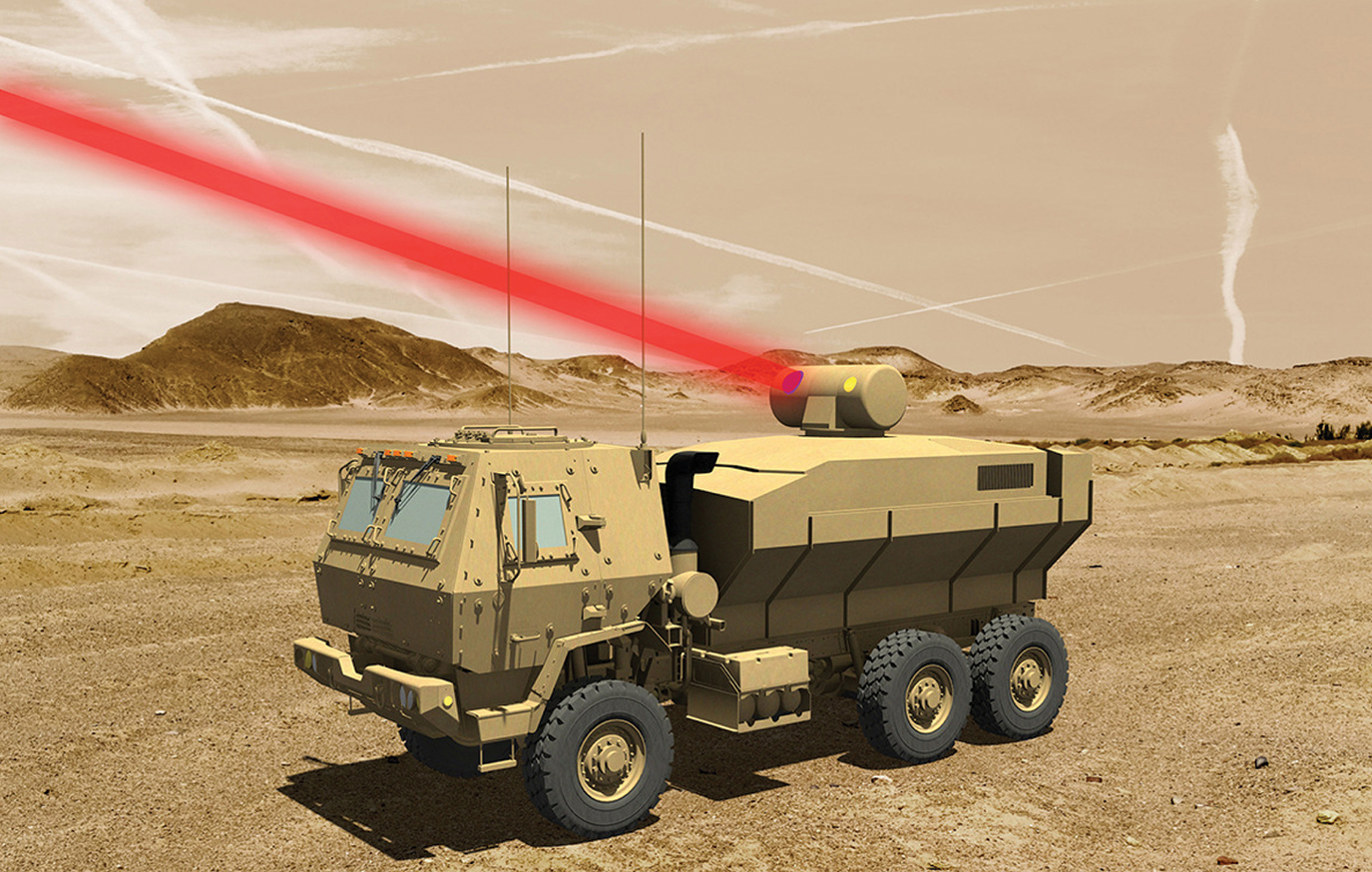
Since their debut commercially in 1990 or so, rugged fiber lasers have grown increasingly powerful and have been showing up in more applications — one example being in a weapon developed by Lockheed Martin for the U.S. military. During testing in March, the system produced a single beam of 58 kW, a world record for a laser of this type. In tests in 2015, a laser half this strength disabled a truck a mile away. The laser gets to the 60-kW threshold by combining several beams and operating near the diffraction limit, according to published reports. The laser system is also said to be efficient, translating more than 43% of electricity consumed into light.
2017
Green fluorescent protein polariton lasers created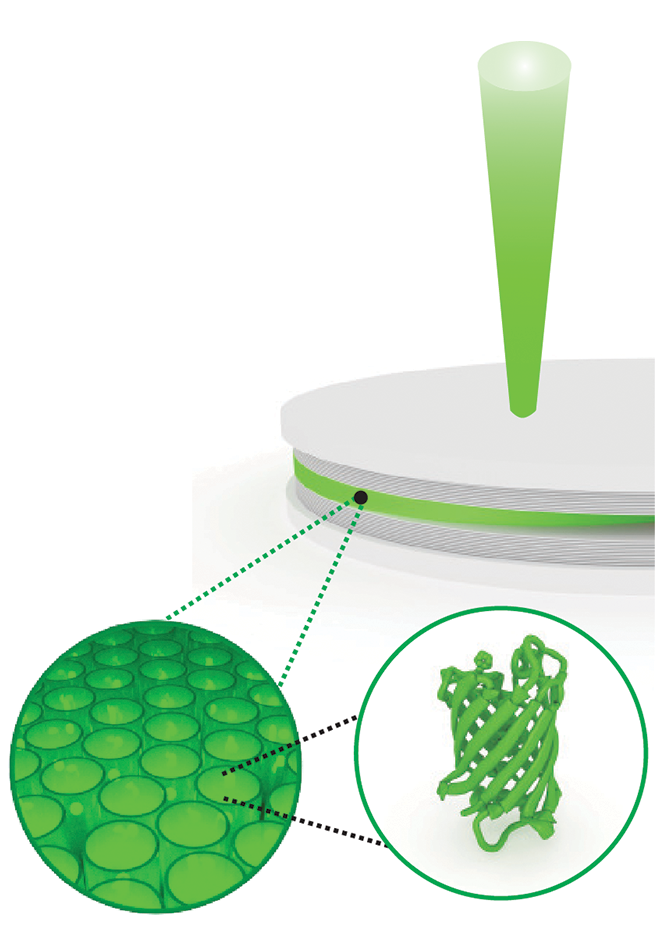
By taking a page - and borrowing a molecule - from nature, researchers from the University of St Andrews, the University of Wurzburg, and the Technical University of Dresden created a fluo-
rescent protein polariton laser. Previous polariton lasers had to be cooled to cryogenic temperatures, but these new lasers were based on green fluorescent protein, the stuff that makes jellyfish emit bright green light. The molecule, the scientists said, was just the right size to strike the optimal balance between not losing energy and quenching and being able to squeeze as many molecules as possible into the light-emitting cells of the jellyfish. The new laser could be a biocompatible, bioimplantable light source, they said. The researchers reported on their work in the August 16 issue of Science Advances.
2018
Random lasers controlled through nanoscale manipulation techniqueRandom lasers could be less random in the future because of a nanoscale manipulation technique outlined in a September paper published in Nature Communications. A team from Finland's Tampere University of Technology, Case Western Reserve in Ohio, and others showed that the output from a random laser based on a liquid-crystal medium could be steered with an electrical signal. This control capability, the researchers noted, brought random lasers closer to practical applications.
2018
NIF delivers 2.15 MJ of laser energy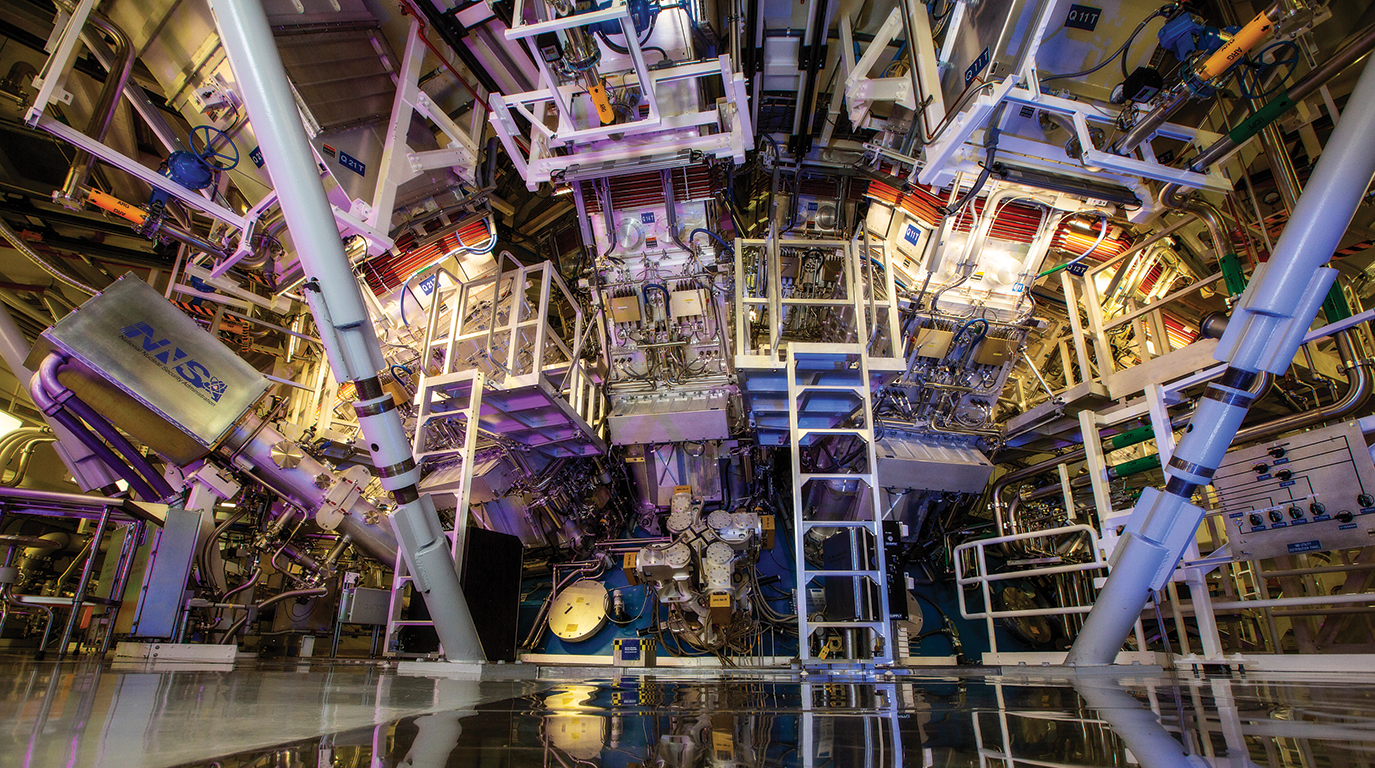
July 2018: Lawrence Livermore National Laboratory’s National Ignition Facility laser system has set a new record, firing 2.15 MJ of energy to its target chamber. This is a 15 percent improvement over NIF’s design specification of 1.8 MJ, and more than 10 percent higher than the previous 1.9-MJ energy record set in March 2012.
Read the story2018
NIST measures burning structures using commercial laser ranging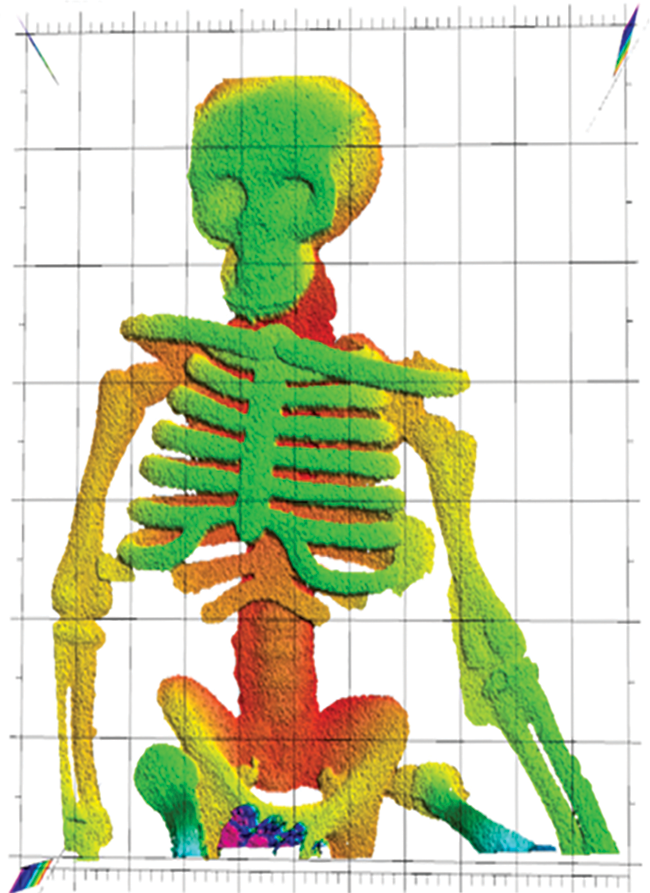
In an August Optica paper, researchers at NIST (the National Institute of Standards and Technology) showed that commercial laser ranging could provide 3D images of objects as they melted in a fire. The NIST team measured 3D surfaces on pieces of chocolate and a plastic toy with 30-µm precision from two meters. The potential to precisely and safely measure burning structures as they collapse could be useful in understanding the process of destruction and in later reconstructing what happened.
2018
Nobel Prize in physics for advances in laser physicsOctober 2018: Arthur Ashkin, Gérard Morou, and Donna Strickland, were awarded the Nobel Prize in physics for groundbreaking inventions in the field of laser physics. Ashkin's work was based on the realization that the pressure of a beam of light could push microscopic objects and trap them in position. A breakthrough came in 1987 when he used the new optical tweezers to grab living bacteria without harming them. Strickland and Mourou helped develop short, intense laser pulses that have broad industrial and medical applications. Their technique, called chirped pulse amplification (CPA), has become standard for high-intensity lasers.
The Nobel Prize in Physics 2018 — Tools Made of Light2018
Scientists have their sights set on a 10-petawatt shotScientists at the Shanghai Superintense Ultrafast Laser Facility have their sights set on a 10-petawatt shot, almost doubling their own record of 5.3 petawatts (PW) (5.3 million billion watts). In a paper published in the November issue of Optics Letters, researcher Wenqi Li and others reported significant progress toward that threshold, with a nearly 340-J output centered at 800 nm. When compressed to a 21-fs pulse, they estimated the peak power would be 10.3 PW. The goal is to hit the 100-PW mark, perhaps by 2023. This power level would be high enough to create matter out of empty space.
2019
Researchers outline way for lasers to deliver whispers to listenersMIT researchers outlined a way to use lasers to deliver whispers to listeners. Scientists used a 1.9-µm wavelength thulium laser to excite water molecules near a microphone, which transmitted an audible signal. The signal sounded about as loud as normal conversation. The technique could allow the sending of secret messages, with potential applications in the military and advertising. A paper appeared in January Optics Letters.
2019
Into the future
Lasers have become essential to many applications and industries, magnifying their impact. Laser-powered lithography today plays a key role in the making of semiconductors, for instance — revenues of which totaled $477 billion in 2018, according to research and analysis firm Gartner. Laser-based ranging systems provide the information needed for safe navigation in autonomous vehicles. The market is small for such vehicles, but projections by Allied Market Research (AMR) indicate the market could top $550 billion by 2026. The medical laser market — which includes solid-state and gas laser systems, dye laser systems, and diode laser systems — could total between $12 and $13 billion by 2023, according to AMR. Popular medical applications include cardiovascular, dermatological, and eye-related treatments. Finally, the market for data centers and long-haul fiber, where lasers and optical connections carry data traffic, is forecast by networking giant Cisco to increase an average of 26% every year through 2022.